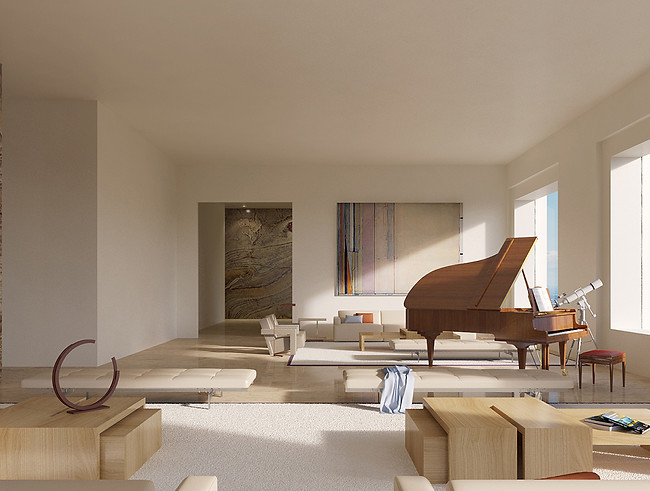UNIQUE METHODOLOGY
DESIGN & ARCHITECTURE
Internationally known designer, Stef-Albert incorporates his love and knowledge of music into his designs.
TRICIA DREVETS

There’s no getting around the fact that interior designer Stef-Albert sees the world a bit differently than most of us. As a musician and an artist, he has a heightened sensitivity to his surroundings that enables him to sense things in a room that the average person cannot.
When he has a new design project, Stef-Albert first meets with the client to listen carefully to the client’s ideas and desires for the space.
“From then on, I guide them gently through the design process,” he says. A next step is for him to spend some time alone in the space. “A room can be so many different things,” he explains. “What I design for a client is not necessarily what I would design for myself. I am in customer services after all. However, I want to spend time alone in the space because the space dictates what needs to happen there.

Explaining that light, dimensions, and location all dictate what he can do with a space, Stef-Albert says he spends a few hours alone in a room, often just sitting on the floor in the middle of an empty room. “I observe the room and I take notes... Then everything seems to fall into place.”
The designer says he begins to visualize things in the room, adding “There is a certain logic to it. I take notes and then I go to my drawing room.”
Once the “logic falls into place,” Stef-Albert says he sometimes feels a little guilty about how quickly the design process goes. He credits his musical background with helping him see the current and future components of the room clearly.

“A room is like a song,” he explains. “There is a certain order to it... Music is based upon a very simple structure. It starts with the melody. If you don’t have the base, the structure can get lost.”
He goes on to discuss that it is no mystery how a hit song becomes a hit song. “Many people tend to just throw things together in a room, but the reason a hit song is a hit song is because everything is just right. It is balanced.”
“Fundamentally, the way I go about working on a piece of music or working on the room is exactly the same. Many people tend to just throw things together in a room. A successful room has to be balanced.”

In addition to holding a PhD in piano performance, Stef-Albert is a painter with works in major private and corporate collections. Born and raised in South Africa, he has residencies in New York, Los Angeles, San Francisco, and in Provence, France. His interior design clientele includes heads of state, Forbes 100 members and other members of the international elite. Based in Manhattan, Stef-Albert Studios has completed projects in France, Morocco, Russia, Singapore, South Africa, the United Kingdom, the United Arab Emirates and the United States.
“The primary function of design is to make itself invisible while conveying the taste, and, above all, the lifestyle of the client,” Stef-Albert says when asked about his design philosophy. “My role as designer is to enrich the perspective and experience of the client, and to assist in establishing his or her own individual standards.”

He stresses that the three main elements of his work are balance, beauty, and rhythm as opposed to trend, force, or pretense. “Rooms are often impressive at first glance, but only those in which one wants to linger have lasting appeal,” he explains.
Stef-Albert is selective about the work he takes on, saying, “I will turn down a project if it does not offer creative potential or creative reward.”

“I approach each design as a composer would in outlining the form of a symphony. Layers are built within classical proportions, while artistic liberties create one-of-a-kind originality. My design process is therefore not selecting beautiful objects to fill a space, but rather the skillful orchestration of proportion and combination.”
“A successful room is measured by how one feels in the space,” he continues. “For me, a room must not merely look good, it must feel good... When I am choosing pieces, I ask, ‘Can you place yourself in that chair for more than five minutes? Can you imagine having a cup of tea in the chair?’”
“My goal with my work is to create beautiful comfortable living space that people want to live in.”

